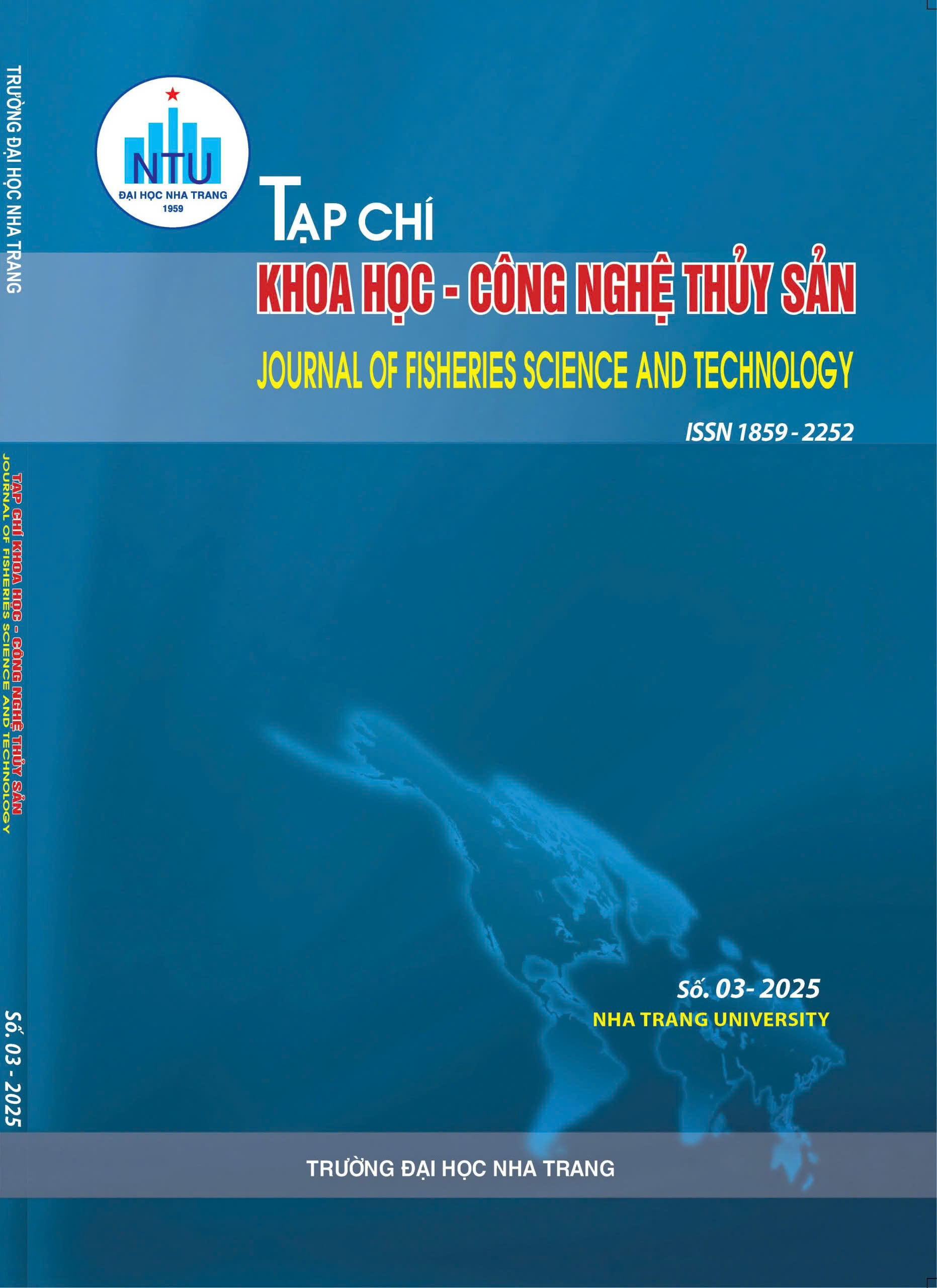##plugins.themes.huaf_theme.article.main##
Abstract
This paper presents an experimental study aimed at optimizing the drying parameters for Sciaenidae fish using a combined infrared radiation and indirect solar drying (IR–ISD) system. The Taguchi orthogonal array design method combined with response surface methodology (RSM) was employed to investigate the effects of four key factors (drying temperature, air velocity, infrared distance and infrared power) on three output responses (drying time, specific energy consumption and moisture reabsorption ratio). The results indicated that the regression models exhibited a high degree of fit with the experimental data. The optimal drying parameters were determined as follows: drying temperature of 59.5°C, air velocity of 2.11 m/s, infrared distance of 0.26 m, and infrared power of 1980 W. Under these conditions, the corresponding output responses were: drying time of 6,93 hours, specific energy consumption of 9.84 kWh/kgH2O, and moisture reabsorption ratio of 1.6 gVLA/gVLK. The system's thermal operating conditions under the optimal mode were as follows: the average water temperature entering and leaving the calorifer was 40.5°C and 35°C, respectively; the air temperature entering and leaving the calorifer was 31.1°C and 35.1°C, respectively. These findings highlight the potential of the IR–ISD system in enhancing the drying efficiency of fish products while promoting the sustainable utilization of renewable energy sources.
Keywords: Sciaenidae fillet, infrared drying, solar energy, infrared–indirect solar drying, optimization, RSM, Taguchi.

